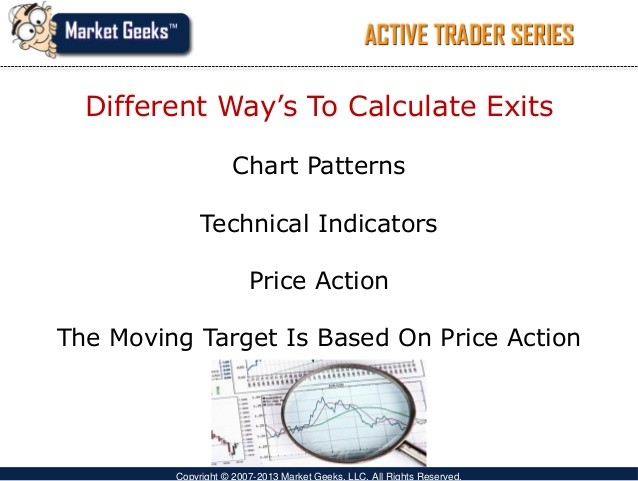Basics of Technical Analysis
Post on: 2 Июнь, 2015 No Comment

What is technical analysis?
Technical analysis is the study of past market data to predict or follow the market trends. It can be applied to all freely traded markets around the world and the information is used to make trading or investing decisions. The market data includes price, volume, open interest (futures & options), Market breadth (stock markets), market cycle, flow of funds and investor sentiment studies etc. Technical analysts/traders do not study economic data, political developments, companies data or market news or events etc. as opposed to economists/ fundamental analysts; they focus on the action of the market itself than the goods in which the market deals.
How does technical analysis work?
Technical analysis assumes that prices are determined by interaction of supply and demand. Key force that drives the supply and demand is investors expectations which are based on human emotions (mainly fear, greed and hope ). The causes of investors expectations are numerous which are irrelevant for a technical analyst. That brings the key rationale behind technical analysis Price discounts everything (Discounting mechanism of markets). The technicians believe that anything that can possibly affect the price — fundamentally, politically, psychologically, or otherwise are reflected in the price of that market. So they focus on studying the chart of the price than analysing the real reason behind the move.
Next important concept in technical analysis is prices move in trends. The main objective of technical analysis is to identify and analyse the trends in multiple time frames and trading in the direction of the trends. Recognizable patterns are developed within these trends. In other words, the traders/investors psychology are expressed in different patterns which have been identified and categorized over the past one hundred years of history of the markets. Technical analysis believes that History (pattern) repeats itself. Another important assumption is that the patterns are fractals in nature. That means, the similar patterns are developed in smallest to largest time frames (tick to yearly) repetitively. So technical analysts study these patterns and attempt to predict/follow the direction of trends in multiple time frames.
Concepts of trend — Types of trend
Technical analysis is nothing but analysis of trends in multiple time frames. Trend can be classified into three types; uptrend, downtrend and sideways trend. An uptrend is defined as prices makes series of successively higher peaks and troughs while the downtrend is established with a series of declining peaks and troughs. Horizontal peaks and troughs would identify a sideways trend. The concept is exhibited in Figure 1.
Figure 1 Three types of trend
The markets are always under the influence of combinations of these three types of trend in multiple timeframes. As seen in Figure 2, the currency pair EURUSD was in uptrend in daily timeframe while it had been in downtrend in weekly timeframe. Traders should focus on confirming the trend direction in the time frame in which they plan to trade.
Figure 2 Combinations of trends that exist in multiple time frames
Support and Resistance
Next important concept in trend is support and resistance and it is very important for a TA oriented traders as their risk control level (exit) is normally decided based on key support/resistance which dictates the trend direction. Therefore identification of key support and resistance levels is an essential ingredient to successful technical analysis.
As discussed in previous section, an uptrend is defined when prices make higher troughs (support) and higher peaks (resistance). A support level is the price at which buyers are expected to enter the market in sufficient numbers to take control from sellers. A resistance level is the price at which sellers are expected to enter the market in sufficient numbers to take control from buyers. For an uptrend to continue, each successive support should be higher than the one preceding it and each resistance must be higher than the one before. If the weakness in the uptrend reverse back to previous low, it may be an early warning that uptrend is ending or it may become a sideways trend, If the support is broken, it indicates that the trend has reversed from up to down. Thorough understanding of support/resistance theory is key for following the concept of trend. Another characteristic of S/R is that the support levels are once penetrated, frequently become resistance and vice versa. They reverse their roles as shown in Fig 3.
Figure 3 Real time example for the theory of Support and Resistance

The strength of support/resistance gives significant importance to the S/R which can be decided by the following factors
- The number of times that the level has been respected;
- The amount of volume that has been traded near the level;
- Whether the level is old or new — recent levels have greater significance;
- Whether the level is a new High or new Low — more extreme levels have greater impact; or
- A level formed at a round number (e.g. $1.000, $1.5000 or $2.000) has more effect.
Trendlines
The oldest and easiest method of determining the trend of prices is with a trend line. Trend lines can be drawn with just a ruler and the use of ones eyes. All that is needed is two/three support reversal points to draw an uptrend or two/three resistance reversal points to draw a downtrend. A simple line which is drawn between the reversal points, as shown in Figure 4 & 5, identifies the trend continuation and reversal clearly.
Figure 4 Simple trendline break confirmed the reversal of NZDJPYs 8 year uptrend
Figure 5 Trendline break may signal pause in the trend and enter into sideways trend
General rules to be applied for trendline studies are
- If a trendline is drawn joining two points, it should be considered as a tentative trendline. When it is touched for the third time, it will become a valid trendline .
- A trendline break need not turn to trend reversal; it could lead to pause in trend or consolidation.
- The longer and more times the drawn trendline are touched by prices, the more significant it is when the line is broken.
- The slope of a trendline is also one of the important criteria. 45 degree slope is considered to be ideal for a stable and sustainable trend. If slope is too steep, the trend is unsustainable for longer time. The trend is too weak if the slope is flat.
- Similar to support and resistance, the trendlines also reverse their role once it is broken. If an uptrend line is broken, it will become resistance line and vice versa.














